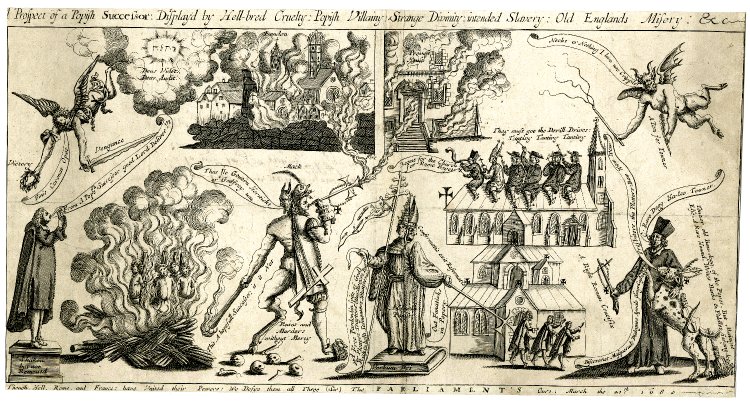
Prospect of a Popish Successor: Displayed by Hell-Bred Cruelty, Popish Villainy, Strange Divining, Intended Slavery, Old England’s Misery, &c. © Trustees of the British Museum.
This satirical print was produced at the height of the Exclusion Crisis. It portrays the expected results of the succession of the Catholic heir, James, Duke of York (1633-1701). Specifically, the print was issued on 21 March 1681, the date on which parliament opened at Oxford to consider the bill designed to exclude James from the line of succession. This print was, then, a piece of propaganda aiming to support the exclusionist faction, which was starting to become known as the Whig party.
At the centre of the print is a double-faced creature representing James as half-devil, half-papist. He points to a bonfire where protestants are being burned alive, and blows fire through a trumpet which sets London ablaze. Another, smaller, double-headed figure offers pardons to ‘Plotters’ and ‘Traytors’, while a group of High Church clerics straddle the roof of a church.
The print became widespread and well-known. It was used as evidence against the Whigs during the treason trial of the unofficial Whig spokesman, Stephen College, in 1681. It was alleged that College snuck copies of the print into the Oxford parliament.